- +91 91000 65552
- +91 92810 19252
- contact@respliceinstitute.com
- Mon-sat 10:00 -18:00
Imagine you’re assembling a giant instruction manual—one for building a person. This manual is made up of chromosomes, tiny bundles of information that tell your body how to grow, think, and function.
Now, most people have 46 chromosomes, arranged in 23 pairs. But in Down’s Syndrome, something unusual happens—there’s an extra copy of chromosome 21. That’s 47 instead of 46. This extra piece of information slightly changes the way the body and brain develop.
So what is Down’s Syndrome? It’s not a disease. It’s not something you “catch.” It’s a genetic condition that affects how a person looks, learns, and interacts with the world. Kids with Down’s Syndrome are like everyone else in all the ways that matter—they have their own personalities, feelings, dreams, and talents. They just learn things at their own pace and might need a bit more help with everyday tasks. You’ll often see them receiving support at a child development center or in special education services.

Although the end result—having an extra 21st chromosome—is similar, there are different ways this happens.
Every cell in the body has three copies of chromosome 21. This happens because of a random error when the baby is forming. It’s the type most people mean when they say “Down’s Syndrome.”
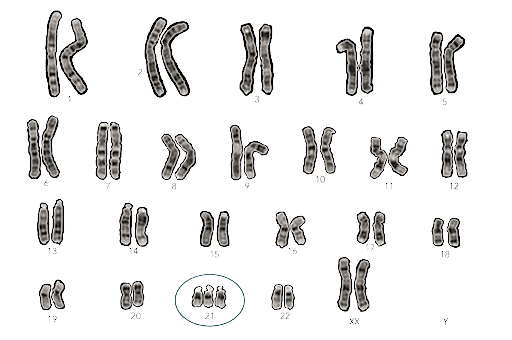
Part of chromosome 21 gets stuck onto another chromosome. It still leads to extra genetic material, but in a different way.
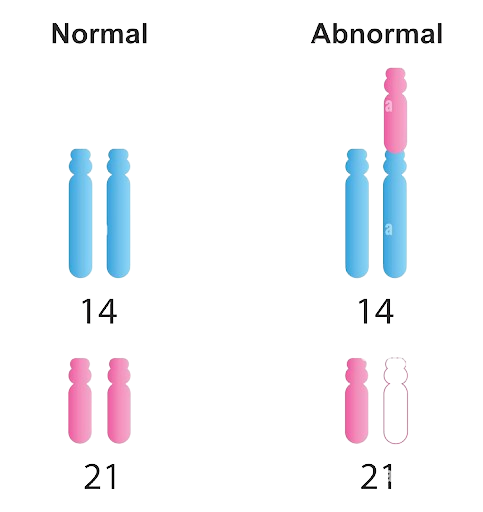
Only some cells have the extra chromosome. Others are typical. This sometimes leads to fewer signs or milder symptoms. Think of it like making a quilt: in Trisomy 21, all patches are the same. In Mosaicism, some patches are different, so the pattern changes slightly.
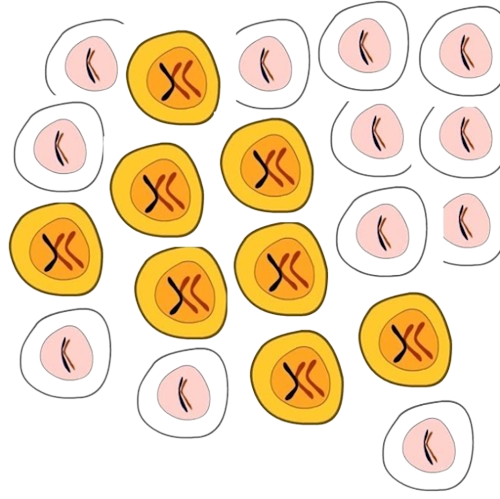
The signs of Down’s Syndrome usually appear at birth or shortly after, but their impact becomes more visible as the child grows.
These challenges are often addressed through speech therapy for children, occupational therapy for kids, and developmental delay therapy for children.
But remember—every child with Down’s is unique. Some may walk at 2 years old, others at 3. Some may speak fluently, others use signs or pictures.
Down’s Syndrome isn’t caused by anything the parents did or didn’t do. It’s a genetic accident that happens during cell division, usually just by chance.
However, certain factors can increase the risk:
a) Maternal Age: Women over 35 have a higher chance of having a child with Down’s Syndrome.
b) Family History: A rare form—translocation—can be inherited, but most cases aren’t.
It’s important to understand that this condition is nobody’s fault. It’s nature doing something unpredictable, like drawing an extra card from a deck.
Down’s Syndrome can be detected before birth (prenatally) or after the baby is born.
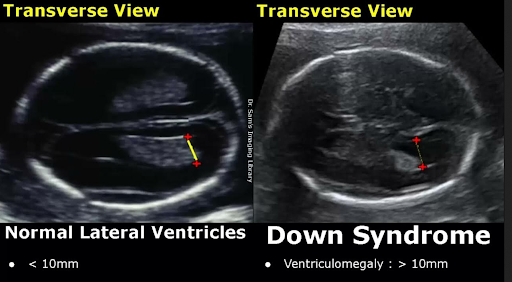
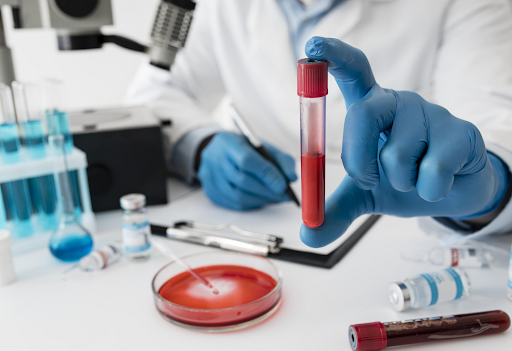
These are non-invasive and widely available during routine prenatal care in pediatric therapy services or advanced hospitals.
2. Diagnostic Tests – To confirm the diagnosis:
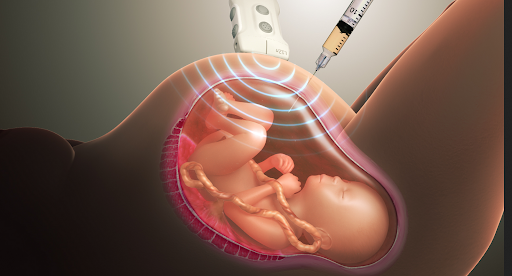
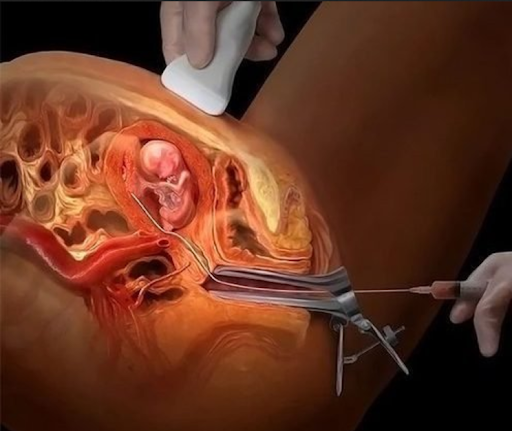
After Birth: Doctors can often suspect Down’s Syndrome based on appearance, but a karyotype test confirms it by checking the baby’s chromosomes. Many centers now also offer genetic tests for autism and related developmental conditions, which can support early intervention.
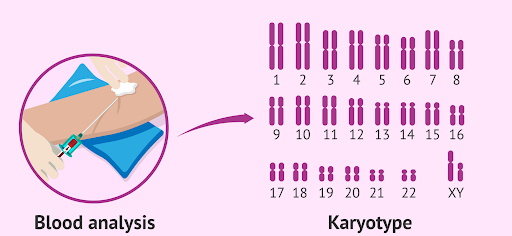
Globally, about 1 in every 700 babies is born with Down’s Syndrome. In India, due to the large population and varying awareness, thousands of babies are born with the condition each year.
Many children go undiagnosed or unsupported, especially in rural areas. But awareness is increasing, and early intervention programs and special education services are helping children with Down’s thrive in schools and homes.
There is no “cure” for Down’s Syndrome, but there are many ways to support development, health, and independence.
Start as early as possible—often within months after birth.
Physiotherapy helps with muscle strength and posture.
Speech therapy helps with feeding (early on) and later with communicatio
Occupational therapy teaches daily tasks like brushing, eating, writing.
These are core parts of child development centers, autism rehabilitation centers, and special education services.
Doctors monitor these regularly and treat them to ensure quality of life.
While not curative, these may help with overall wellness and emotional balance.
There is growing research into the gut-brain connection. Kids with Down’s may benefit from:
This intersects with approaches in gut microbiome autism and functional medicine.
These help build independence in school and home settings.
Some therapists use biofeedback, music therapy, or sensory rooms to help improve calmness, focus, and mood, especially in children with anxiety or sensory sensitivity.
Down’s Syndrome doesn’t mean a child can’t learn, grow, or dream. It just means they take a different road to get there—one that may be longer or slower, but full of small victories and beautiful surprises. With the right blend of therapies, structure, and love, these children can live meaningful, connected lives.
At Resplice Research Institute, doctors use a treatment called Gut Microbiota Transplantation (GMT) to help children with Down’s Sydrome, especially those who also struggle with stomach problems, sleep issues, irritability, and behavior challenges.
The big idea: Our gut (stomach and intestines) is filled with tiny living germs called bacteria, most of which help us digest food, keep our immune system strong, and even send signals to our brain. This is called the gut-brain connection. In many Down’s Sydrome children, these bacteria are not balanced—what we call gut dysbiosis—and that may affect how they feel, behave, or even think.
GMT works by transferring healthy bacteria from the poop of a healthy child (called a donor) into the gut of the Down’s Sydrome child. Over time, these new “good” bacteria settle into the child’s gut, help fix imbalances, and support better overall health.
Resplice Outcome in Down’s Sydrome:
What Makes GMT at Resplice Special? Here’s what makes the process safe, careful, and unique at Resplice:
Not just anyone can be a donor. At Resplice, donor screening is done using a set of international medical guidelines (called the International Stool Banking Consensus) and gut microbiome test. This includes:
Unlike other places that use adult donors, Resplice uses donors under age 12. Why?
Every day, fresh stool is collected from the child donor in a germ-free, gamma-sterilized container (which means it’s super clean). Here’s how it’s handled:
The treatment isn’t done just once—multiple infusions are given over weeks to slowly reshape the gut-brain axis or the communication between gut and brain. Why? Because it takes time for the new bacteria to settle in, multiply, and take over the unhealthy ones in the child’s gut. Gradually, this reshapes the entire gut microbiome, which can lead to:
GMT is not about changing who someone is. It’s about helping the body and brain work together more smoothly by fixing what’s going on in the gut. At Resplice, this is done scientifically, safely, and with compassion, always as part of a bigger plan that includes therapy, nutrition, and emotional support.
Down’s Syndrome is a genetic condition—not a disease, and not something anyone caused. It happens when a baby has an extra copy of chromosome 21. Think of it like having an extra page in your instruction manual—it changes the way the body and brain develop, often leading to slower learning and unique physical features.
Not quite. While all children with Down’s Syndrome share some traits, every child is unique. There are three types—Trisomy 21 (most common), Translocation, and Mosaic Down’s. The type can affect how symptoms appear, but love, support, and early therapy help every child thrive in their own way.
There’s no cure—but there’s also no need to “fix” who a child is. Instead, we focus on helping them grow, learn, and communicate. With early intervention, therapy, and medical support, many children with Down’s lead joyful, meaningful lives.
Signs vary but may include floppy muscles, slower to sit or walk, unique facial features (like almond-shaped eyes), and delayed speech. These aren’t warnings—they’re signals to start early support like physiotherapy or speech therapy.
Before birth, screening and diagnostic tests (like ultrasounds, blood tests, or amniocentesis) can provide early clues. After birth, doctors confirm using a chromosome test called a karyotype. Diagnosis opens the door to early care—not worry.
No. Down’s Syndrome happens due to a random event during cell division. It’s not caused by stress, diet, or anything a parent did or didn’t do. While the chances increase slightly with maternal age, it can happen to anyone.
Children with Down’s may have heart defects, hearing or vision problems, thyroid issues, or sleep apnea. Regular medical checkups help catch and treat these early, keeping your child comfortable and healthy.
Many children with Down’s attend mainstream schools with some support, while others benefit from special education services. The goal is always the same: help your child learn in a way that suits their pace and strengths.
Yes, but it might take more time and practice. Speech, physiotherapy, and occupational therapy are like daily exercises that gently strengthen your child’s skills—step by step, word by word.
The gut is like a second brain—it talks to our nervous system through tiny signals. In many children with Down’s, gut issues (like constipation, gas, or food intolerance) can affect mood, sleep, and learning. Fixing the gut helps the brain feel calmer and more focused.
GMT involves gently transferring healthy gut bacteria from a carefully chosen child donor into your child’s gut. This can improve digestion, reduce irritability, support sleep, and even make therapy more effective by balancing the gut-brain connection.
At Resplice, GMT is done using world-standard donor screening, sterile procedures, and child donors under 12—because their microbiomes are purer and safer. It’s not a quick fix, but a careful process that can support long-term improvement.
Early intervention is key. Therapies often include:
Physiotherapy for posture and strengthOccupational therapy for self-help skills
These are offered at child development centers and special education services.
Some families find support in Ayurveda, homeopathy, sensory integration therapy, or dietary changes like gluten-free food or probiotics. These aren’t cures—but they may boost wellness, digestion, and emotional balance when used thoughtfully.
Love them fiercely. Advocate for early support. Celebrate every milestone—big or small. Your child may take a different path, but with the right support, their road can still lead to joy, connection, and deep purpose.
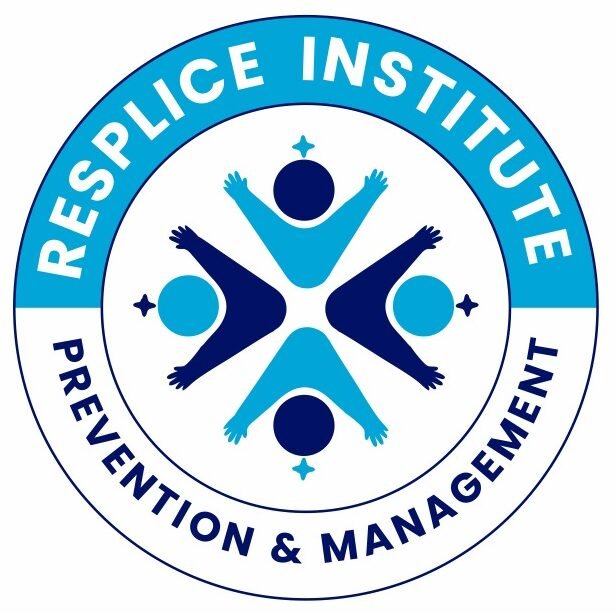
Resplice Institute is India’s first integrated center offering autism therapy, gut microbiome treatment, and preventive health planning. We combine science and empathy to heal lives from the root.
© 2025 respliceinstitute.com || All Rights Reserved